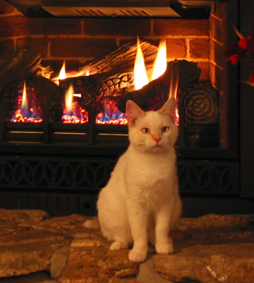
Photo by Dr. Teri Ann Oursler
There we were, all 80 of us, bright-eyed and bushy-tailed and ready to learn to be veterinarians. We were paying rapt attention to the instructor when the classroom door opened and an administrator stepped in. He called for one of our classmates to come with him; there’d been a call from home.
She told us later that the call had been from her husband. After she left that morning, he had thrown some clothes in the dryer and had turned it on. Thankfully he didn’t leave the house, so he was able to hear the cries of their old cat as it was tumble-dried with the laundry.
He rushed the cat into the veterinary hospital where it was treated for burns to its ears and footpads as well as some pain from being tossed around inside the dryer. The poor old fellow survived, but it certainly served as a cautionary tale to a group of wide-eyed veterinary students.
Over the years, I’ve seen and heard about several similar predicaments. Probably the worst are the outdoor cats who decide to curl up under the hood of a car where there’s a warm engine. Motor vehicles have belts to drive things like the compressor, the power steering pump and so forth. If a cat has chosen to shelter in this warm, seemingly safe and protected place, it can be disastrous if he doesn’t get out of there before the engine is started. A common cold-weather recommendation is to bang on the hood and blow the horn of your car before starting the engine; simply getting in and closing the door may not be enough to encourage a comfortable cat to depart in time to avoid severe injury or death.
One of my feline crew, called The Princess, is a huge fan of fleece and will sometimes burrow under a blanket on the couch. Her biggest risk is being sat upon! The Terrorist is a monster fire fan, and I’m pretty sure the only thing that keeps him from becoming a Roman candle is the fact that our fireplace is a woodburning Buck stove with totally enclosed flames. We refer to his sprawled winter pose directly in front of its blower as “worshiping at the feet of the fire god.” We always have to move him when adding logs because of the danger of sparks; I have absolutely no desire to chase a flaming cat in order to douse him with water. Seriously, that would be a bad deal right there.
Candles! I love candles. I get scented ones, particularly around the winter holidays. There are some great “pet odor eliminator” ones that can cover up darned near anything else in the house, should you have the need for such a thing. However, that’s one of those times when curiosity truly could result in the death of the cat, so if you have any sort of open flame, make sure it’s completely protected and out of reach. Singed whiskers aren't the end of the world, as those do eventually grow back and it's a myth that removing them affects the cat's balance. However, particularly in longer-haired cats or any cat not paying attention to the proximity of its tail to a source of fire, the risk of igniting the fur is just too great. And practically speaking, if the cat's on fire, you may end up losing the entire house because of it. No thanks! <shudder>
Cats may jump onto counters where hot stovetops can burn their feet; they may also jump onto heaters and radiators with similar consequences. If a cat is used to lying on a woodburning stove during warm weather months, he can be in for a nasty surprise if he jumps up there after a fire is built in the winter. Burned feet are treatable, but they are VERY painful, and it is no fun at all to try to manage these wounds in an angry, hurting cat. Far better to anticipate and prevent that injury in the first place.
They also might snuggle up to something warm and not realize they’re getting too hot because of the insulating effect of their fur; by the time they move away, it’s possible to have sustained first or second degree burns to the skin because of that indirect contact. They don't realize it's happening until it's too late, and wide areas of skin can be damaged. Ouch, ouch, ouch.
It may be stating the obvious, but it’s worth pointing out that unlike the redneck that says, “Y’all hold my beer and watch this,” a cat doesn’t really have much capacity to think about the long-term consequences of its actions. Therefore, much like with children, it’s up to us to try to predict what can go wrong and prevent it in order to protect them from harm. Bang on the hood of your car or blow the horn; troubleshoot by looking around your home and thinking, “How could this go wrong?” in order to make sure that your cat stays both warm ans safe.